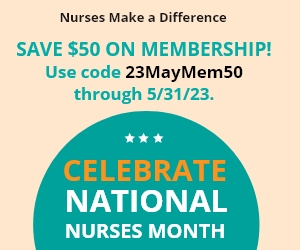Boost Your OR Staff’s Practice Confidence & Critical-Thinking Skills
By: Periop Today
Published: 5/10/2023
A Common Challenge
Preparing new nurses to practice confidently and think fast and effectively for the patient is one of the biggest challenges any OR educator faces today.
An interdisciplinary high-performance team (HPT) at Boston Medical Center concluded that presentations and standard in-service education were NOT enough to give inexperienced OR team members what they needed to sustain knowledge and critical thinking skills for trauma surgery response, explained Ingrid Rush, MHA, BSN, RN. She’s a clinical quality improvement and patient safety specialist in the Department of Surgery and one of the HPT facilitators for trauma and pediatric surgery.
Interdisciplinary Team Focused on Quality Improvement
In response, Rush and an interdisciplinary team of nurses, surgeons, surgical technologists, ancillary staff, and anesthesia providers created an ongoing quality improvement initiative to enhance trauma surgery education. “We needed a more effective way to help each team member build practice confidence in a team setting that they could put in place weeks or months after learning … and we found it,” Rush explained.
Their ultimate solution: interdisciplinary simulation education combined with debriefing in a didactic setting. Role cards for each team member, created through process mapping and interdisciplinary team review, reinforce learning between education sessions.
Rush and her team recently shared their success at the 2023 AORN Conference, including project outcome data indicating 78.9% of project participants wanting more of this type of hands-on training and 54.2% of participants feeling confident to act in their role in a real trauma surgery after participating in the simulation training.
3 Tips to Create Your Own Confidence-Boosting Education Program
Periop Today asked Rush for a few pearls on how any OR education team could mirror similar success to instill practice confidence and critical-thinking skills for new nurses in any surgical setting. Here’s her advice:
- Define specific activities for each OR team member’s role.
Using process mapping, Rush and her team documented each step for a specific role during a common trauma surgery, then filtered down the top 5-7 most important tasks that would fit on the front of an 8 ½ x 11-inch role card. For example, the role card for the scrub role addresses PPE, counts, set-up, and warnings such as clear communication with the team if any issue arises, such as a contaminated kit. The back of this card contains a notes section with more detailed information, such as mayo stand items and expectations for performing emergency surgery in the ICU or ED. The 8 ½ x 11-inch role cards were then made into 3” x 5” badge buddy cards to attach to the badge or fit in the pocket for convenience.
“Our team began this project by implementing the role cards alone, but we found learners did not retain the knowledge until they put it into practice through simulated learning,” Rush noted.
- Create an interdisciplinary simulated education session to test and build knowledge for acting in each respective role.
Leveraging access to the hospital’s simulation learning lab, Rush and her team plan interdisciplinary sim trainings quarterly for common trauma surgeries such as abdominal gunshot. Chosen simulation participants reflect a mix of new and experienced team members. The goal is to test critical actions each role must perform unprompted, such as noting the need to initiate the Massive Hemorrhage Protocol when the simulation mannequin’s blood pressure decreases to a specific level.
To expand learning, the sim training is live streamed to the classroom next to the simulation OR so more team members can share and gather knowledge from the education event. The team also worked with the perioperative educators to provide live-stream access to non-team members for the benefit of reaching more learners.
- Structure a pre-operative briefing and (most importantly) a post-operative debrief where troubleshooting and learning is solidified.
The sim training includes an extended briefing in the adjoining classroom before the surgery that mimics an actual trauma surgery briefing when a surgeon calls the trauma team together, communicates relative patient information and ETA to the OR.
After the simulated surgery, the team rejoins the larger group back in the classroom to debrief on how team members performed. The team continues the live-stream of to allow non-HPT observers to listen in and ask their own questions. For example, the surgeon may talk about response time to call for blood or another planted challenge, while an observer may ask for clarification on a process. During this debrief the learners can raise questions or concerns, which opens the door to team communication and reinforces learning for how to perform tasks correctly in a real surgery, Rush said. “The debrief has turned out to be an important tool in supporting knowledge acquisition and retention of all staff, while helping less experienced staff solidify learning and boost critical thinking.”
A Modification for Any OR
Because interdisciplinary simulation training takes time to coordinate, is costly and can only be done four times a year, Rush and the team are exploring new ways to implement hands-on learning in any OR through gameplay. For example, they would have a new scrub and RN circulator be observed in a mock OR to set up for a specific trauma surgery case and then debrief on how they did.
“One of the most important things educators can do? Take time to talk to your new staff and understand their educational needs and learning styles,” Rush acknowledged. “Then you can start exploring ways to fill those needs from your learners’ perspectives.”
Build Clinical Skills, Build Confidence
AORN has much content to share with our new colleagues, as we want them to be successful in perioperative nursing.
For new to career nurses, the AORN website is a supportive resource to guide them in safe practice as they start their careers. AORN Journal articles contain much knowledge about the procedures they may encounter as well as how to implement guidelines (see Guidelines in Practice articles), learn about new tools for practice, get answers to safety topics (see Safety First articles), gain more knowledge around their skills (see Back to Basics articles), and so much more from their peers. When they need to know something quick, the Guideline At-A-Glance series provides a quick overview of clinical know-how such as with procedures and instruments In a few minutes, they can get knowledge and insight on their specific practice and question points.
Joining the specialty community on OR Nurse Link that most interests them will provide a group with whom to network.
From an education standpoint, there are many AORN courses for them to take starting with Periop 101 for the basics of clinical practice knowledge, then the Periop 202 content covering specialty procedures. Specific topics can also be explored through content from Expo and webinars or toolkits.
—Colleen Becker, PhD, MSN, RN CCRN-K
AORN Director of Education



